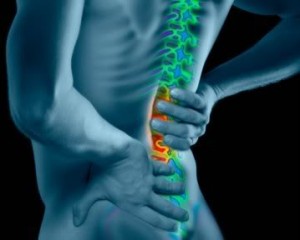5 Reasons Why You Should Avoid Doing Sit-Ups

by Edward Scaduto, Colorado Springs Personal Trainer and Owner of Precision Fitness
“Change means that what was before wasn’t perfect. People want things to be better.” – Esther Dyson
It’s time to change your abdominal training program, change it for the better.
It’s time to say no to sit-ups; by doing so you allow room for safer and more effective exercises that will fortify and strengthen your abs and spine.
At Precision Fitness our official recommendation is to avoid the traditional sit – up.
The reason you may ask? This exercise poses too much of a risk compared to the benefits and no matter how you put it, getting hurt is not a lot of fun.
Here are 5 reasons why you should avoid doing sit ups:
1. You can’t spot reduce, you can only spot build.
I know you want a flatter stomach or you want those wash board abs so it may seem logical that doing sit-ups and crunches will help your tummy fat go away.
Fat loss just doesn’t work that way. You can build the muscles of the abs but that does nothing to reduce the fat storage sitting on top of them.
Fat loss can only be accomplished through a sound nutrition program and a comprehensive exercise program like the Precision Fitness Training System.
2. Over training one movement pattern at the expense of others is a sure-fire way to muscle imbalances.
The body was designed to move in many ways.
Nowhere in the body is that more apparent than the abs.
They help you bend, extend and twist in countless ways.
Your body strives to perfect a hundred different movement patterns that activate a countless number of muscles.
By performing the same movement over and over again, like crunches and sit-ups, you set the body up for repetitive stress injuries.
These small movements done over and over again can create muscle imbalances in the torso. This creates a sub-optimal environment that can decrease the function and the potential of your body. In worst case scenarios it can cause low back pain and more.
3. The Abs do more than flex the spine, they do much more.
The abs have two primary jobs.
The first one is bracing the body. You brace every time you reach, push, pull, throw, swing or kick.
Any athletic movement requires bracing at some time during the movement and in most cases, twice.
You also brace during every day activities like when you pick up an object from the floor with one hand and even when you’re only opening a door.
The second primary job is to create the bridge between the legs and upper body to transfer power.
Take a tennis fore-hand swing for example.
The upper body and trunk rotates back in preparation to hit the ball, then the hips will rotate forward creating power for the swing. The the abs will then brace creating the ‘bridge’ that will work to rotate the torso and arms forward to strike the ball.
This is just one example of how the abs are designed to function. If you look closely you can find many examples of this function through out our daily and athletic lives.
4. Your spine flexes all day long
We flex our spine all day long.
A typical day for the average person starts by waking up and sitting at breakfast with one’s spine flexed (bent forward).
Then this person commutes to work for an hour and then sits at work for eight hours all with the spine flexed.
After a day of sitting, the individual drives home and eats dinner flexed and then sits on the couch and watches a couple hours of TV with the spine in a flexed position.
There should be one place the abs and spine should not have to flex and that is during your fitness program.
The health of your back depends on your ability to balance the work load, movements and stress that you place on it.
5. Sit-Ups produce the same force in the disc that can create a disc bulge or disc herniation.
It’s estimated that 80% of the population will see a doctor or chiropractor at some point in their life due to back pain.
According to Stuart McGill, a professor of spine bio-mechanics at the University of Waterloo, sit ups produce the exact same force in the spine that can create disc bulge and disc herniation, two of the most common low back injuries.
Does it make sense to perform exercises that can create common back injuries?
I didn’t think so either.
The Bottom Line
These are the 5 reasons of why you need to stop doing sit-ups immediately.
In it’s place start using planks and leg lifts to strengthen your core. These two types of abdominal exercises are much safer on your spine and there are countless variations and modification that you can use.
Take these recommendations and apply them today in your program, your back will thank you for it.
If you have any questions on how to implement correct abdominal training into your fitness program please do not hesitate to contact Colorado Springs Best Personal Trainers at Precision Fitness at 719-640-0141.
Did you enjoy the article? If so, make sure to sign up for email updates.
It’s easy and it’s free and you’ll continue to get great informative articles from our blog in your email.



